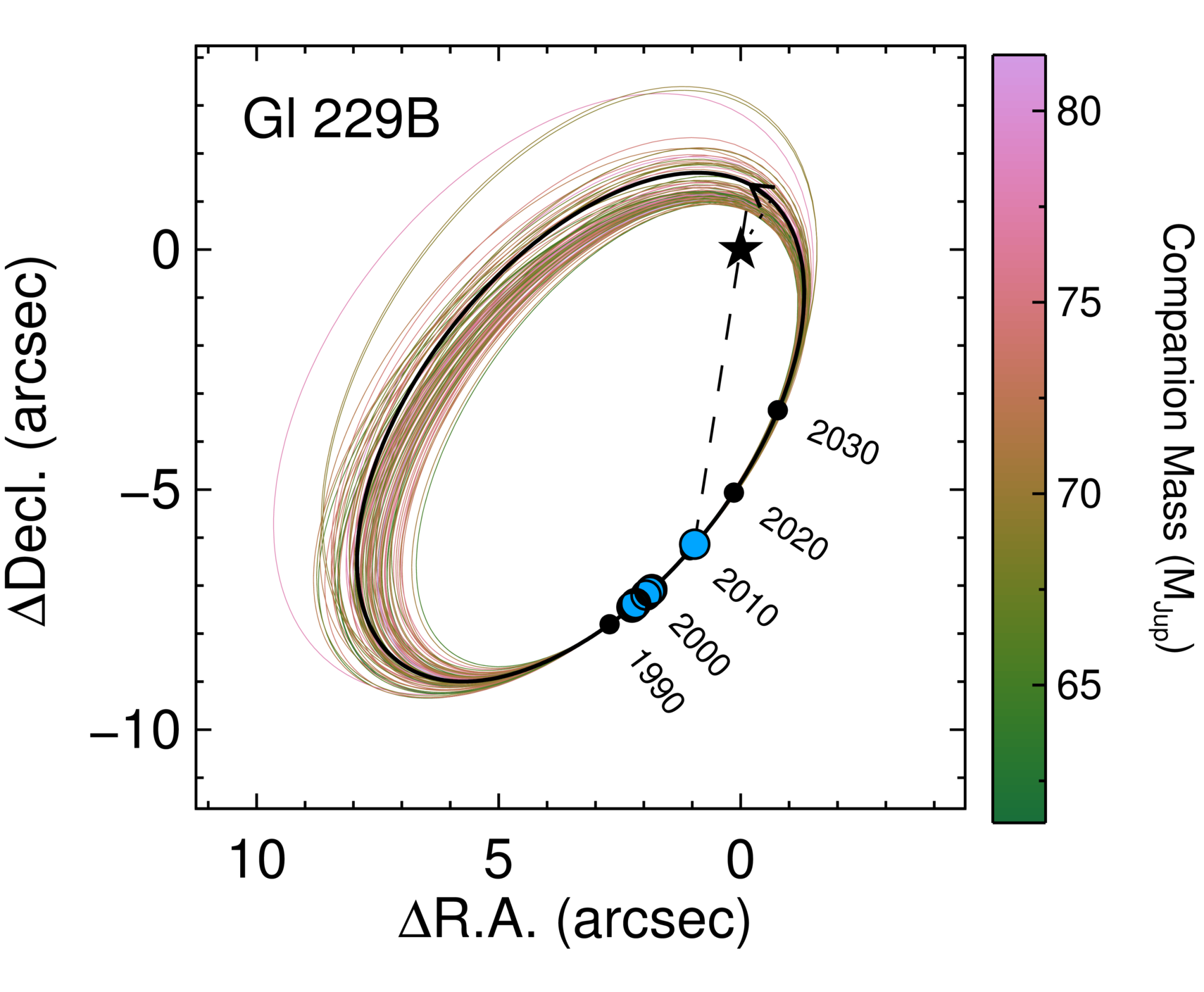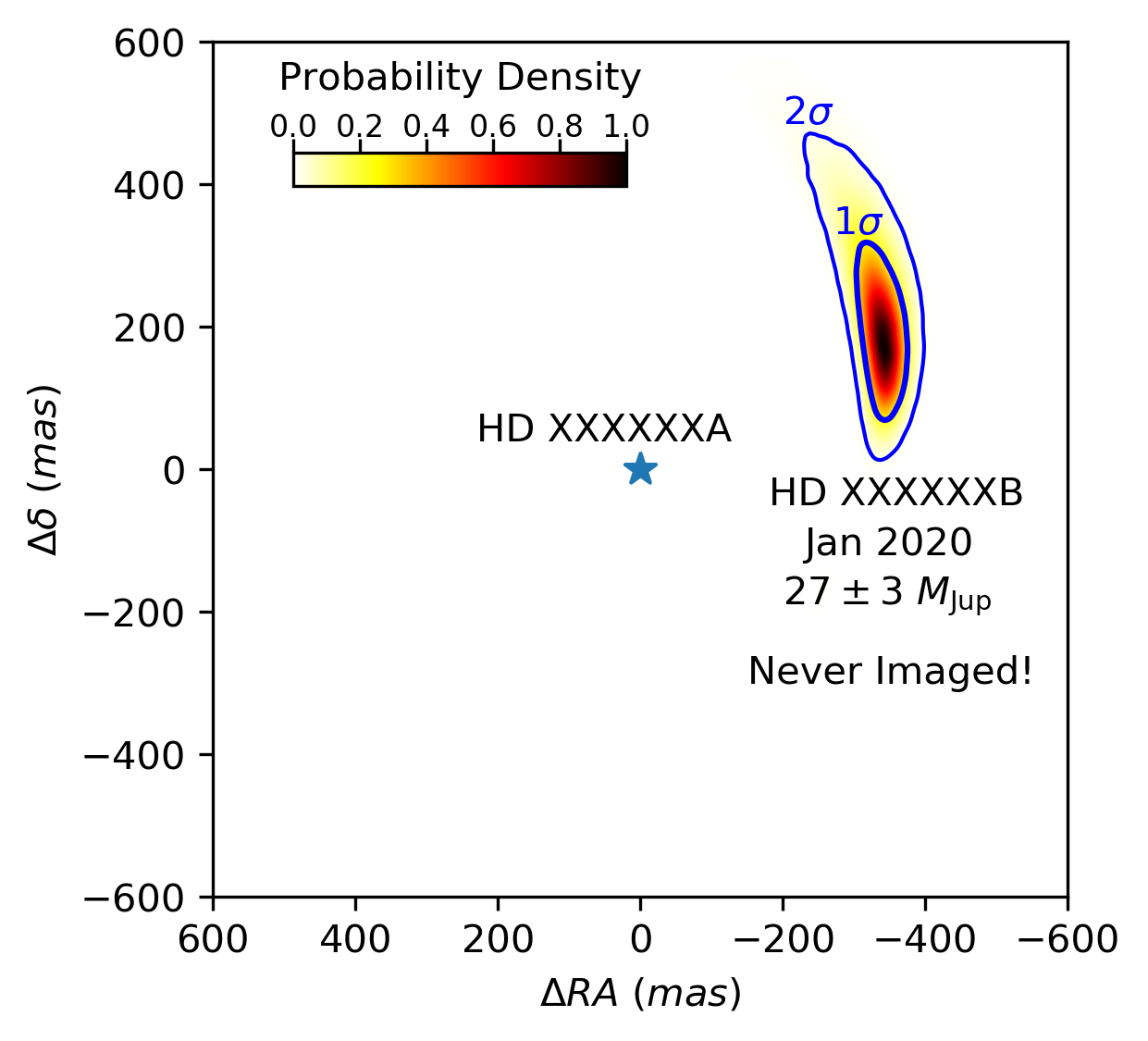Orbits and Masses of Exoplanets and Brown Dwarfs
Exoplanets and brown dwarfs are difficult to image because they cool and fade with time. Until now, we have mostly found them by imaging many nearby young stars and occasionally getting lucky. Our yields in this approach have been very low. But now, we can use ultra-precise measurements of stellar positions from the European Gaia satellite to trace out the tiny orbital arcs stars make as they are tugged by unseen companions. We can look for planets around stars that are accelerating. Even better, we can combine Gaia's measurements with radial velocity and imaging measurements to fit orbits and measure masses, even when our observations only cover a small fraction of an orbit.
Mass is one of the most fundamental property of an exoplanet or brown dwarf, but it is extremely difficult to measure. Brown dwarfs and exoplanets lack an internal source of energy, so they cool and fade with time. Independently measured masses and ages are the only way to test models of their formation and evolution. Now, we can both improve our ability to find planets and brown dwarfs with imaging, and we can immediately measure precise masses. The left image below shows the orbit we have measured for the first brown dwarf ever imaged. We derived a mass of 70±5 Jupiter masses despite its orbital period being centuries.
In the future, we will even be able to predict the masses and locations of exoplanets before imaging them. The figure on the right below shows an example of a brown dwarf where we can measure its mass and predict its current position, even though it has never been imaged.

